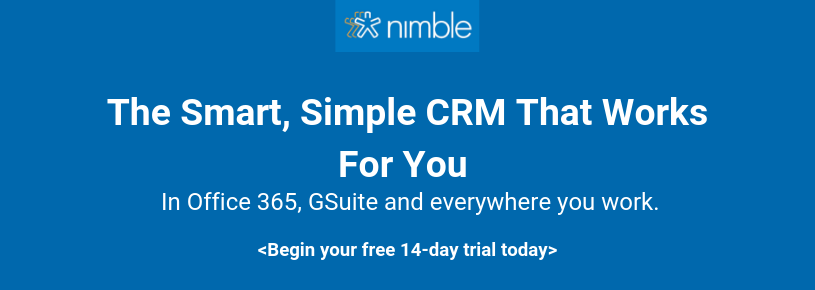As your company considers moving from a traditional paper management solution to a digital solution, you’re likely to encounter some resistance from other members.
Change can be scary! But we’re living in a world with highly advanced technology. Artificial intelligence is finding its way into our CRMs, individuals have access to handheld computers in the form of their smartphones, and we’re still developing more solutions.
If things are advancing so rapidly, why are you still encountering resistance?
Why do people still use paper?
eFileCabinet named a few top statistics when they asked the top 3 reasons why companies still use paper solutions and are resistant to a paperless process. Some of these stats that jumped out to us included:
- 44% of companies claimed they still needed paper to collect physical signatures
- 40% of companies didn’t understand the paper-free options available to them.
- 18% of companies said switching processes is a major (and possibly disruptive) change.
Once you dive into the facts, you’ll realize that each reason is nothing to worry about.
In fact, when you switch to a completely digital process, your organization may see major advancements in productivity. Paper may even be one of the things holding back your sales!
Let’s dive a little deeper into each excuse to learn more about why digital solutions are so important.
Companies Claimed to Need Physical Signatures
It’s amazing that 44% of companies still named signing documents in their top 3 reasons for maintaining a paper management process. In reality, your company doesn’t need paper waivers and forms at all.
Digital signatures have been legal since the year 2000 (for about 20 years!).
Plus, digital signatures can make documents more versatile, accessible, and safe. This is because:
- Digital waivers offer more options than simply signatures. You can also ask custom questions, collect contact information, and incorporate multiple signing/initialing sections. When you find an especially effective format, save it as a template to use again.
- Digital waivers come in many forms, making them accessible across many platforms. For instance, people can sign from your company’s website, from an email link, or on a kiosk in the office.
- Digital waivers have features that protect against fraud, like auto photo capture to prevent forgery, extensive filing for future reference, and safety video embedding to better communicate potential risks.
However, these benefits are only possible when you have the best technology to support these benefits. Luckily, companies like Smartwaiver, offer forward-thinking waiver tech designed to adapt to any type of form you need.
Companies Don’t Understand Their Options
With so much potential technology out there to invest in, it’s no wonder some professionals get confused about their options. However, to mitigate this, your company really just needs to make a plan.
Consider the various departments and strategies your company has in place. You probably have one for your marketing initiatives, sales, hiring, human resources, and more. Different tools are used to enhance each departmental strategy your company offers.
What’s the core tech for each internal strategy? Your company’s CRM.
Your CRM (customer relationship manager) is what you use to store data about each of your company’s customers and opportunities. This data is key to incorporate into successful strategies. For instance, you can have more successful outreach when it’s easy to quickly lookup details about those with whom you’re communicating.
What’s the core tech for your client-facing strategy? Your website.
Your website is where you want to communicate the bulk of information to current and potential customers. It should be easy to navigate and include everything they need to know. Try including a blog with top tips and software updates. If you’re sending out waivers to customers, include it as a widget to your website (more information here), or sell your products online with a digital store.
Past these two major tech options, your organization’s investment depends a lot on the services you provide and your individual strategies.
We’ll dive deeper into how you can find the best tech for your company in the next section.

Switching Processes is a Major Change
Many companies worry about going paperless because it’s a major change to an organization’s internal structure. We’re not arguing here! It is a big change. However, in the long run, it’s a change that can help your company increase productivity and accuracy.
To conduct the change, your company will need a clear organization structure in order to ensure a smooth transition of data. Some consultants will help you create a plan to make this transition easier. For instance, DNL Omnimedia offers this guide to develop a digital strategy specifically for nonprofit organizations.
Here are the major steps your organization should go through to make sure you switch effectively from paper to digital processes: You’ll need to organize your paper files, choose the best software, train your team members, then collect team feedback.
1. Organize paper files
Before you can effectively implement a new digital system, your company will need to make sure the current paper system you work with is very organized to make the data migration process easier.
Organizing your current filing system by strategy and department can provide a further indication for the goals of your digital strategy.
For instance, while organizing, you may:
- Identify gaps in your current approach to data storage and collection.
- Decide on the best key metrics to influence your company’s decisions.
- Review your long-term priorities and see how tech can help you achieve them.
- Find additional ways to increase productivity within your company.
This process will help you answer the question of what problems you’re trying to solve with software and what types of solutions will be most beneficial.
Then, with everything well organized, the implementation process of your software investment will also be smoother and easier to handle.
2. Choose the best software
Once you’ve decided what gaps you’re trying to fill with a software solution, you’re ready to choose which solution you need. There are a lot of different providers out there. Here are some of the key features to look for in a few example solutions:
- CRM software: Your company should look for comprehensive and customizable contact records, customized segmentation for marketing initiatives, task to-do lists and reminders for internal projects, a calendar, and a mobile app.
- Waiver software: Your company should look for unlimited custom questions, flagged questions, multi-language capability, parent/guardian relationship, email links, QR codes and kiosks, data export, staff users, and email marketing.
- Event software: Your company should look for customized registration forms, mobile ticketing, venue management, vertical-specific software, event tools like auction software, social media integrations, and an event scheduler.
Make sure you list the features you’d want in your ideal software before investing in a solution. This will help you make the best decision for your company.
You should also talk to stockholders and stakeholders, especially if you choose a software solution that will change traditional methods of communication, to discuss how they may be affected by the change.
3. Train your team members
When you buy new software, you’ll want to carefully consider who will be using it and how they’ll learn to use it. Consider the following training options:
- Buy easy-to-use software. For solutions that serve a single purpose or that your organization will only use every once in a while, consider purchasing a solution that’s inherently easy to use. Look for indications that the provider will be available over a chat feature or over the phone for any issues you encounter.
- Look for software with training options. When you purchase software solutions that offer many different types of features for you to use, they also may offer training videos or courses that will help you use the solution. Ask the implementation team if this is an option when you buy core solutions.
- Hire an external consultant. Consultants and training specialists can help you both configure solutions and learn to use them. This tends to be a great option for those who have a lot of integrations to work with or a lot of customizations they want to incorporate into the solution.
An alternative option to these three is to conduct your own research and find external training resources on Youtube or explanatory websites. However, you run the risk of working with people who aren’t experts in the software. They may communicate incorrect or unhelpful information.
4. Collect feedback
Check-in with your team members frequently to see how the solution is working out. Ask if they need additional training to make sure everything is running as smoothly as it can be.
This is also the chance you have to analyze the software itself and how your company is using it.
Set some key performance indicators to watch from the beginning and see how they changed from before to after you invest in digital management solutions.
If things aren’t going as planned, you may consider reanalyzing your strategy to make sure you’re using the software to its fullest potential. Ask a consultant for their opinion if you’re still concerned after the analysis.
If things are going as planned, congratulations! You’ve successfully transitioned from a paper to a digital management process.
Conclusion
Transitioning from paper to digital management processes is hard! But it only gets harder as your company continues to grow and expand. The excuses you have now may be holding you back from reaching maximum company productivity.
There’s no time like the present to make the transition!


